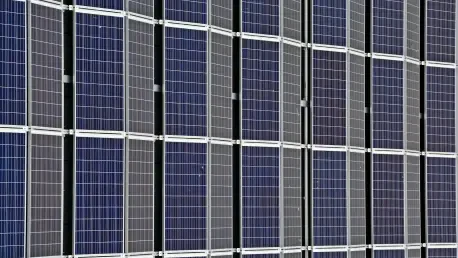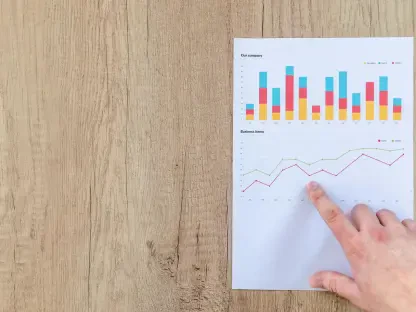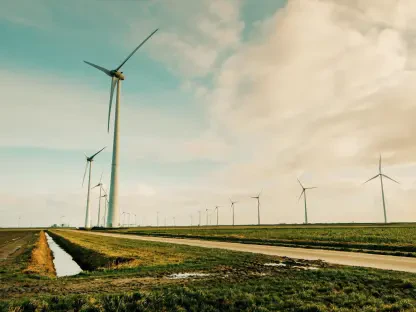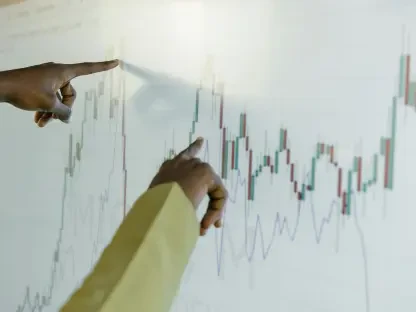I’m thrilled to sit down with Christopher Hailstone, a renowned expert in energy management and renewable energy, who also serves as our Utilities expert. With his deep knowledge of electricity delivery, grid reliability, and security, Christopher offers unparalleled insights into the evolving landscape of sustainable energy. Today, we’ll dive into the latest developments from the International Solar Alliance (ISA) Assembly, exploring how the organization is driving actionable change, fostering global cooperation, and leveraging innovative technologies to shape a greener future. Our conversation will touch on transformative solar projects, funding initiatives, digital advancements, and the vision for an inclusive energy landscape.
Can you walk us through what it means for the International Solar Alliance to shift “from ambition to action”? What tangible steps are illustrating this change?
Absolutely, Carlos. The shift from ambition to action within the ISA signifies a move away from just setting lofty goals to actually implementing projects with real-world impact. It’s about turning discussions into deliverables. For instance, the ISA is now prioritizing projects that directly address energy access in underserved regions, ensuring that solar solutions are not just planned but deployed. This includes streamlining funding mechanisms and fostering partnerships that expedite project rollouts. It’s a clear signal that the focus is on measurable progress, like increasing solar capacity in member countries and empowering communities with sustainable energy solutions.
How do you think the ISA’s emphasis on implementation and measurable outcomes is influencing the global renewable energy sector?
The ISA’s push for implementation is setting a new standard for how international energy organizations operate. By focusing on measurable outcomes, they’re creating a framework where success isn’t just about promises but about hard data—think gigawatts of solar power installed or number of households electrified. This approach is inspiring other sectors and countries to adopt similar accountability. It’s fostering a competitive yet collaborative environment globally, where nations are motivated to showcase real progress. I’m particularly excited about seeing how this drives innovation in solar tech and deployment strategies worldwide.
Could you explain how the solar facility managed by Africa50 is supporting ISA member countries with funding for distributed solar projects?
Certainly. The solar facility under Africa50 is a game-changer for ISA member countries, especially in Africa. It acts as a financial catalyst, pooling resources and mobilizing capital specifically for distributed solar projects. These are smaller-scale initiatives, often off-grid or micro-grid systems, that bring power directly to remote or rural areas. By providing accessible financing—through loans, grants, or risk mitigation tools—it lowers the barrier for governments and private players to invest in solar. This facility bridges the funding gap, ensuring that even communities with limited resources can adopt clean energy solutions.
What kind of impact are these solar projects having on communities in ISA member countries? Can you share a specific example or story that stands out?
The impact is profound, Carlos. These solar projects are not just about electricity; they’re about transforming lives. They’re enabling access to education, healthcare, and economic opportunities in places where power was once a luxury. I recall a project in a rural village in an ISA member country where a small solar grid powered a community center. For the first time, kids could study after dark, and local businesses extended their hours. It’s these kinds of stories—where energy access directly uplifts quality of life—that highlight the human side of renewable energy. It’s not just technical; it’s deeply personal.
You’ve mentioned the STAR-C Network and its use of digitization and AI in solar development. How is this initiative creating a “Silicon Valley of solar” for the Global South?
The STAR-C Network is an exciting innovation hub for solar energy, particularly tailored for the Global South. By integrating digitization and AI, it’s creating a tech-driven ecosystem where data analytics optimize solar project planning, maintenance, and efficiency. Think of it as a digital brain trust—sharing best practices, forecasting energy needs, and even predicting equipment failures before they happen. This “Silicon Valley of solar” concept is about building a center of excellence that empowers developing regions to lead in solar innovation, ensuring they’re not just adopters but creators of cutting-edge solutions.
How would you describe a “green, smart, and inclusive” energy future, and what role is the ISA playing in making this a reality?
A “green, smart, and inclusive” energy future is one where energy is sustainable, technologically advanced, and accessible to all. Green means zero-carbon sources like solar dominate; smart refers to intelligent systems that maximize efficiency through tech like AI; and inclusive ensures no one is left behind, regardless of geography or income. The ISA is pivotal here—they’re not only advocating for solar adoption but also ensuring it’s equitable. Through initiatives like funding facilities and knowledge-sharing networks, they’re building a foundation where even the most marginalized communities can benefit from clean energy.
This year’s ISA Assembly was noted for being more accelerated and focused on implementation. What changes or strategies have contributed to this new approach?
This year’s Assembly marked a shift toward urgency and execution, which is refreshing. They’ve restructured their sessions to prioritize actionable agendas over lengthy discussions. There’s a stronger emphasis on workshops and decision-making forums where concrete plans are hashed out. Additionally, they’ve enhanced collaboration with member countries to align on specific targets, cutting through bureaucratic delays. It’s about creating a sense of momentum—ensuring that ideas don’t just stay on paper but move quickly into the field, with clear timelines and accountability measures.
Can you elaborate on the Memorandums of Understanding signed with six organizations during the Assembly? What do these partnerships mean for the ISA’s mission?
These Memorandums of Understanding, or MoUs, are strategic alliances that bolster the ISA’s capacity to deliver on its goals. They involve collaborations with various organizations—think tanks, financial bodies, and tech providers—that bring expertise, funding, or innovation to the table. These partnerships are crucial for scaling up solar projects, sharing technical know-how, and accessing new funding streams. For the ISA, it means a broader network of support, allowing them to tackle challenges like project financing or technology deployment more effectively. It’s a multiplier effect for their mission of global solar adoption.
The ISA is becoming more robust and streamlined, as noted in recent statements. What specific improvements or processes are driving this transformation?
The ISA’s evolution into a more robust and streamlined entity comes down to a few key improvements. They’ve tightened their governance structure, making decision-making faster and more transparent. There’s also a greater focus on data-driven strategies—using analytics to track progress and identify bottlenecks. Additionally, they’ve improved coordination among member countries through regular check-ins and standardized reporting. These processes ensure that resources are allocated efficiently and that the organization can adapt quickly to challenges. It’s about being agile while maintaining a clear focus on execution.
How do the country statements from ministers at the ISA Assembly help shape the direction of global solar cooperation?
Country statements from ministers, especially those representing regional vice presidents at the ISA Assembly, are incredibly influential. They provide a platform for nations to voice their unique challenges, priorities, and successes in solar energy. These statements help align the ISA’s strategies with real on-the-ground needs, ensuring that initiatives are relevant and impactful. They also foster a sense of shared purpose—when ministers share their commitments or progress, it encourages others to step up. It’s a powerful way to build consensus and drive collective action on a global scale.
With the Africa Solar Facility set to launch next year, can you tell us about its objectives and how it aligns with the ISA’s broader goals?
The Africa Solar Facility, launching next year, is poised to be a cornerstone for solar expansion in Africa. Its primary objective is to accelerate the deployment of solar projects by providing targeted financial and technical support. This includes de-risking investments and offering capacity-building programs to local stakeholders. It aligns perfectly with the ISA’s broader goals of promoting equitable energy access and fostering sustainable development. By focusing on Africa, where energy needs are critical, it addresses a key region for global solar growth, ensuring that clean energy reaches areas that need it most.
There’s also a new regional interconnection program aimed at reducing reliance on battery storage. Can you explain how this works and why it’s significant for solar energy adoption?
This regional interconnection program is a forward-thinking initiative to enhance solar energy reliability without over-relying on expensive battery storage. It works by linking solar power systems across regions, creating a shared grid network where surplus energy from one area can be redistributed to another facing a deficit. This reduces the need for individual storage solutions, cutting costs and improving efficiency. It’s significant because storage has been a major hurdle for solar adoption—by minimizing that dependency, the program makes solar more viable and scalable, especially in regions with inconsistent sunlight.
What is your forecast for the future of global solar cooperation under the ISA’s leadership?
I’m very optimistic about the future of global solar cooperation with the ISA at the helm. I foresee a decade of unprecedented growth in solar adoption, driven by stronger international partnerships and innovative financing models that the ISA is championing. We’ll likely see more regions achieving energy independence through solar, with technology like AI and interconnection grids playing a bigger role. The ISA’s focus on inclusivity will ensure that developing nations aren’t left behind, potentially reshaping global energy equity. If they maintain this momentum on implementation, I believe we’re looking at a tipping point where solar becomes the backbone of global energy systems.









